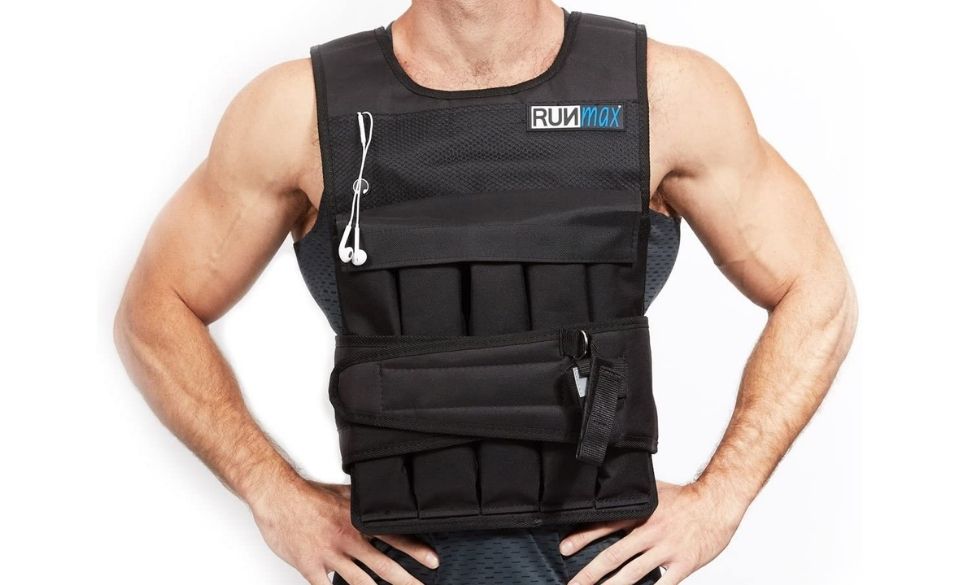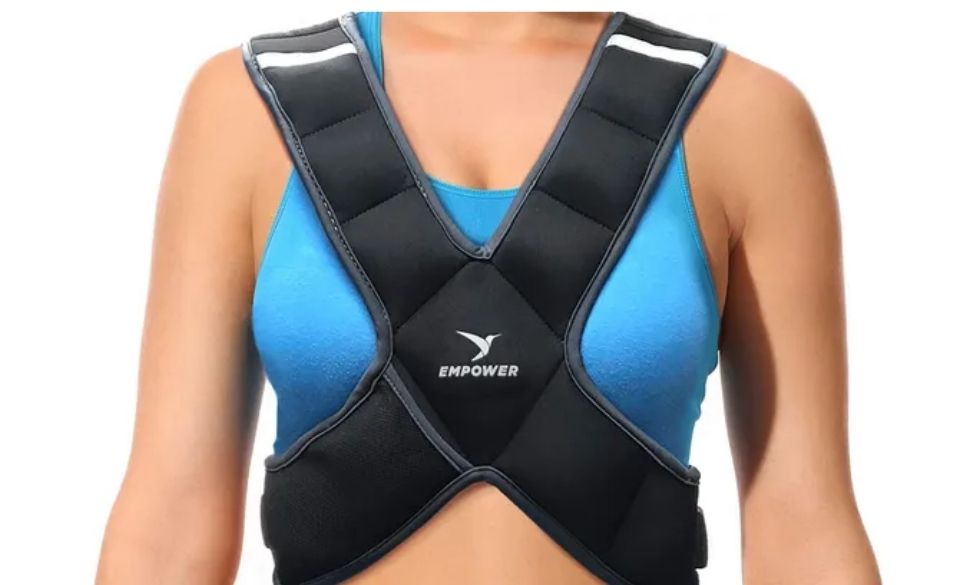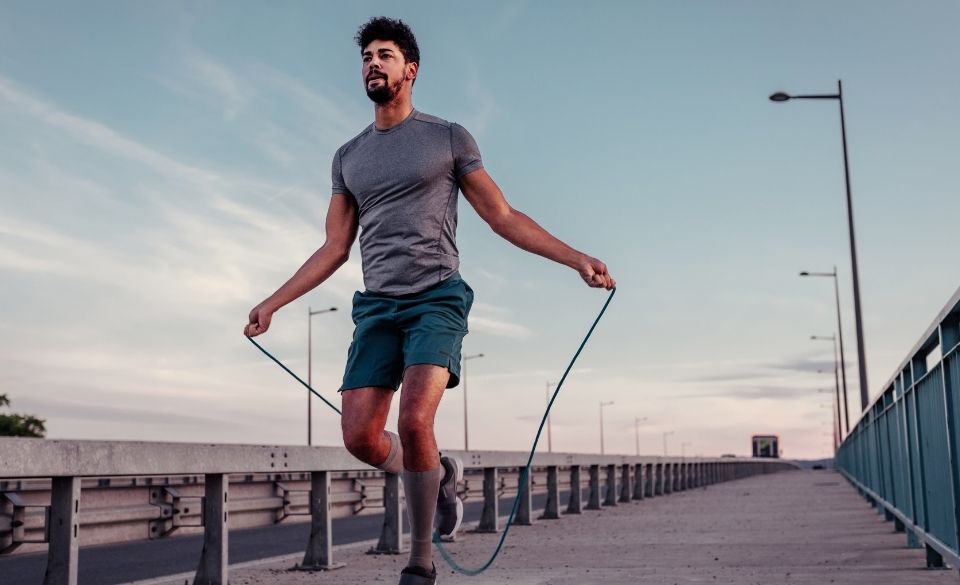
Jump Rope With Weighted Vest – UPDATED 2022 – A Complete Guide
Page Contents
Doing regular jump rope workouts has been shown to improve cardiovascular fitness, speed, and agility. However, there are times when you need to increase the training load or intensity to get more benefit from the workout. That is where doing jump rope with a weighted vest can help you supercharge your workout.
By what are the benefits of doing jump rope with a weight vest? Can it improve your speed, agility, and aerobic system?
I this article, we discuss the benefits of skipping with a weighted vest and how it can benefit your training. So continue reading to learn more.
Jump Rope With Weighted Vest – A Complete Guide
Jump rope with a weighted vest has been around for many years. However, more and more people are starting to incorporate using a weighted vest when skipping. But what are the benefits of this?
Since jump rope involves the use of much more muscles than your legs, it is common for people to use it as a form of cardio. Since the impact is much less than running and allows most people to raise their heart rate quicker, it is no surprise many people choose this over running.
Jump rope not only helps develop the muscles in your legs, improves agility and speed, it also helps develop your lungs.
However, just like many other exercises, you may come to a point where you need to increase the intensity or duration to see the same benefit. Otherwise, you will start to plateau.
This is where putting on a weighted vest can help you continue to see gains from your skipping. It will require the muscles to work harder, lungs to suck in more oxygen, and the blood to pump more.
Because skipping helps burn calories much faster than running, adding a weighted vest to the workout can even increase it more. However, it is important to start with a weighted vest that is not more than 10% of your body weight.
Research has shown that a vest that weighs between 4-10% of your body weight is the ideal vest for aerobic activity. However, for the beginner, you are better to start on the lower side of these figures. Then add more weight as you get used to wearing one.
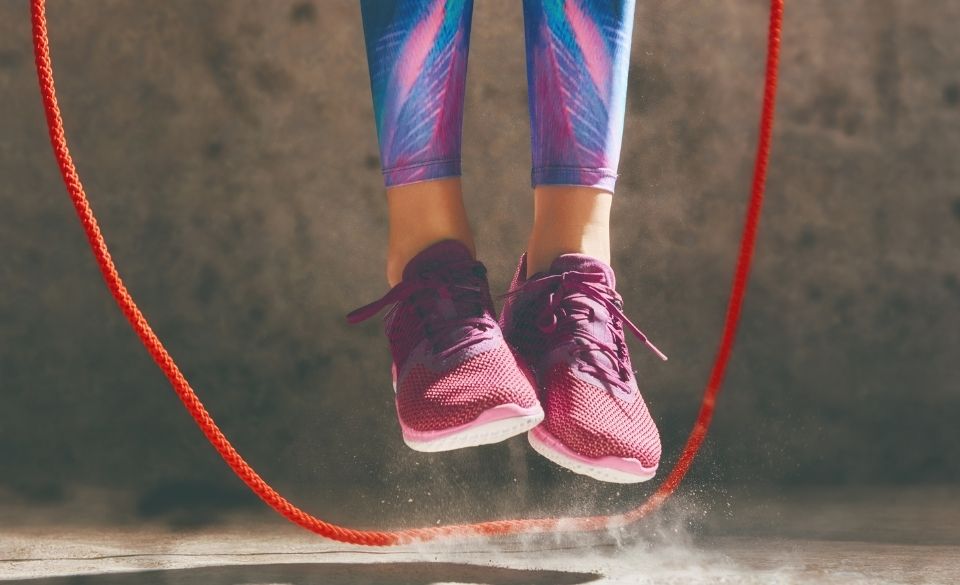
Skipping With Weighted Vest – What You Should Know?
If you are skiing with a weighted vest for the first time, it is important to follow a few rules. These include:
– Use a vest that is no more than 10% of your body weight
– Slowly increase the length of time each week
– Make sure the vest fits properly
– Make sure no clothes can cause chafing or friction between the skin and vest.
Generally skipping with a weighted vest is relatively safe. However, if you jump into skipping the same amount as you did without a vest, you may cause stress on your calf muscles.
The calf muscles are one of the most susceptible areas of the body to be overworked when doing jump rope. It, however, is one of the areas where you will see the greatest transformation.
Apart from the calf muscles, the arms and shoulders are constantly worked. But it is mindful that too much skipping can cause rotator cuff issues if you don’t follow the right technique.
So, to make sure you don’t experience any injuries from skipping, slowly increase your weekly volume or duration by no more than 10% each week.
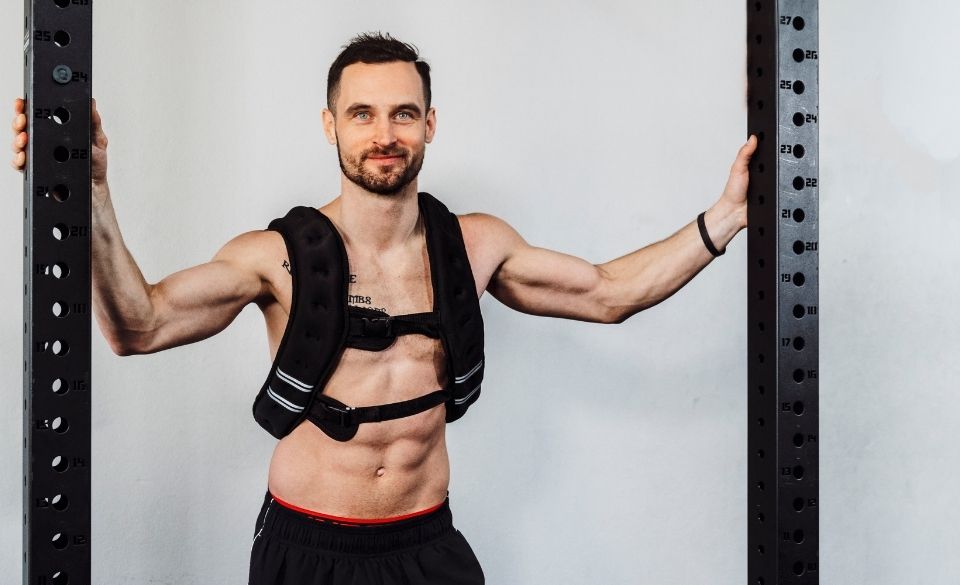
Best Weighted Vest For Jumping and Skipping
While there are numerous brands and vests available online, which is the best-weighted vest for jumping and skipping?
Below we have put together a list of the best-weighted vests for jumping and activities that require a comfortable and well-fitting product.
RUNFast Max Pro Weighted Vest
Starting at $35, it is one of the cheaper vests on the market. However, don’t let this put you off. The RUNFast Max Pro weighted vest can be loaded with different weights, ranging from 5kg up to 25kg. It is also ergonomically designed to fit the contours of your body, making it comfortable too.
Hyperwear Hyper Vest PRO
If you are serious about doing training with e weighted vest, the Hyperwear Hyper Vest PRO is a must-have. The Hyper Vest helps distribute the weight perfectly around the vest, to give you freedom of movement and provide lasting comfort. It also has multiple adjustments to make the vest mold to the shape of your body. However, it doesn’t come cheap. At $200 it is one of the more expensive weighted vests on the market.
Empower Weighted Vest for Women
The Empower weighted vest is specifically designed for women and to fit the contours of their chest. That is why the Empower weighted vest stands out from the crowd. Shaped to fit a women’s body and designed to hold different amounts of weight. The Empower weighted vest is the best all-around weighted vest for women on the market. Starting from $50 it is hardly going to break the bank too.
Understanding Weighted Vest Conditioning
To understand the importance of weighted vest conditioning you need to understand the benefits. By using wearable weights you can increase resistance and energy consumption. However, generally using wearable weights are mainly used to increase the metabolic conditioning component of your workout.
Unfortunately as of today research is rather limited in the benefits of using body weights during a workout. Some research says it can help improve VO2max, speed, and time to exhaustion. However, other studies have found that there is little to no benefit to running, skipping, or jumping while wearing a weighted vest.
Either way, if you think wearing a vest with weights in it can benefit you, trial it and see if you get any performance benefits from it.
Are Weighted Vests Bad For Your Back?
Often when people see someone exercising with a vest full of weights, the first thought to mind is it can’t be good for the back.
While this is somewhat true, it comes down to how much weight you place in the vest. People that already have back and neck problems should stay away from training with a vest. This is because using a vest with weights puts extra stress on your spine, shoulders, and lower back if your posture and technique aren’t correct.
However, for people that have good posture, form, and technique, wearing a weighted vest generally won’t cause any problems if the vest weight is kept under 10% of their body weight. Doing so helps prevent placing excess stress on muscles, tendons, and bones when exercising with added weight.

